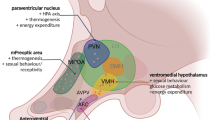The aim of the present work was to compare the effects of stimulation and blockade of D2 dopamine receptors on depression-like behavior in male rats in conditions of androgen deficiency. The D2 dopamine receptor agonist quinpirole (0.1 mg/kg, i.p.) and the D2 dopamine receptor antagonist sulpiride (10.0 mg/kg, i.p.) were given daily for 14 days both alone and in combination with low-dose testosterone propionate (0.5 mg/kg, s.c.) to gonadectomized (GE) males. Dopaminergic substances were given before behavioral testing and then throughout the test period. Depression-like behavior was assessed using the Porsolt test, while the nature of orientational-exploratory behavior was evaluated using the open field test. Chronic administration of sulpiride to GE males did not produce any significant change to the extent of depression-like behavior in the Porsolt test as compared with the control group (p > 0.05). However, combined administration of sulpiride and low-dose testosterone propionate to GE males led to a prodepressant effect as compared with controls (p < 0.05). In the open field test, this group of rats showed increases in grooming and exploratory activity from the levels seen in controls (p < 0.05). Use of quinpirole or its combination with low-dose testosterone propionate produced a marked antidepressant effect in the Porsolt test (p < 0.05) as compared with the control groups and GE males given testosterone propionate only. The combination of quinpirole and testosterone propionate produced positive effects which were the sum of the individual effects of the two substances alone on the level of depressivity in the Porsolt test. Administration of quinpirole alone or in combination with low-dose testosterone propionate did not alter total movement activity but increased the proportion of grooming in GE males from the control level. The results obtained here provide evidence that stimulation of D2 dopamine receptors leads to antidepressant actions in androgen-deficient male rats while blockade of D2 dopamine receptors, conversely, has a prodepressant effect.
Similar content being viewed by others
References
Ya. Buresh, O. Bureshova, and J. P. Houston, Methods and Basic Experiments for Studies of the Brain and Behavior, Vysshaya Shkola, Moscow (1991).
Ya. D. Kirshenblat, A Practical Handbook for Endocrinology, Vysshaya Shkola, Moscow (1969).
S. N. Mosolov and P. V. Alfimov, “The role of dopamine D3 receptors in the mechanism of action of contemporary atipsychotics,” Sovrem. Ter. Psikh. Rasstr., No. 1, 2–9 (2014).
P. D. Shabanov, A. A. Lebedev, and Sh. K. Meshcherov, Dopamine and the Reinforcement System of the Brain, Lan’, St. Petersburg (2002).
R. Amiaz and S. M. Seidman, “Testosterone and depression in men,” Curr. Opin. Endocrinol. Diabetes Obes., 15, No. 3, 278–283 (2008).
J. M. Beaulieu and R. R. Gainetdinov, “The physiology, signaling, and pharmacology of dopamine receptors,” Pharmacol. Rev., 63, No. 1, 182–217 (2011).
S. Bhasin and S. Basaria, “Diagnosis and treatment of hypogonadism in men,” Best Pract. Res. Clin. Endocrinol. Metab., 25, No. 2, 251–270 (2011).
N. Carrier and M. Kabbaj, “Extracellular signal-regulated kinase 2 signaling in the hippocampal dentate gyrus mediates the antidepressant effects of testosterone,” Biol. Psychiat., 71, No. 7, 642–651 (2012).
M. M. Cherrier, “Testosterone: action, deficiency, substitution,” Front. Horm. Res., 37, 150–162 (1990).
M. El-Ghundi, B. F. O’Dowd, and S. R. George, “Prolonged fear responses in mice lacking dopamine D1 receptor,” Brain Res., 892, No. 1, 86–93 (2001).
G. Grunder, “Cariprazine, an orally active D2/D3 receptor antagonist, for the potential treatment of schizophrenia, bipolar mania and depression,” Curr. Opin. Invest. Drugs, 11, No. 7, 823–832 (2010).
J. E. LeDoux, “Emotion circuits in the brain,” Annu. Rev. Neurosci., 23, 155–184 (2000).
K. M. Money and G. D. Stanwood, “Developmental origins of brain disorders: roles for dopamine,” Front. Cell. Neurosci., 7, 260, 1–14 (2013), doi: 10.3389/fncel.2013.00260.
E. J. Nestler and W. A. Carlezon, “The mesolimbic dopamine reward circuit in depression,” Biol. Psych., 59, No. 12, 1151–1159 (2006).
R. D. Porsolt, A. Bertin, and M. Jalfre, “Behavioral despair in rats and mice: strain differences and the effects of imipramine,” Eur. J. Pharmacol., 51, No. 3, 291–294 (1978).
D. A. Slattery, A. L. Hudson, and D. J. Nutt, “Invited review: The evolution of antidepressant mechanisms,” Fund. Clin. Pharmacol., 18, No. 1, 1–21 (2004).
A. B. Veras and A. E. Nardi, “The complex relationship between hypogonadism and major depression in a young male,” Prog. Neuropsychopharmacol. Biol. Psychiatry, 34, No. 2, 421–422 (2010).
F. A. Zarrouf, S. Artz, J. Griffith, et al., “Testosterone and depression: systematic review and meta-analysis,” J. Psychiatr. Pract., 15, No. 1, 289–305 (2009).
Author information
Authors and Affiliations
Corresponding author
Additional information
Translated from Rossiiskii Fiziologicheskii Zhurnal imeni I. M. Sechenova, Vol. 100, No. 12, pp. 1374–1381, December, 2014.
Rights and permissions
About this article
Cite this article
Fedotova, Y.O. Effects of Stimulation and Blockade of D2 Dopamine Receptors on the Behavior of Gonadectomized Male Rats. Neurosci Behav Physi 46, 544–547 (2016). https://doi.org/10.1007/s11055-016-0274-1
Received:
Revised:
Published:
Issue Date:
DOI: https://doi.org/10.1007/s11055-016-0274-1




